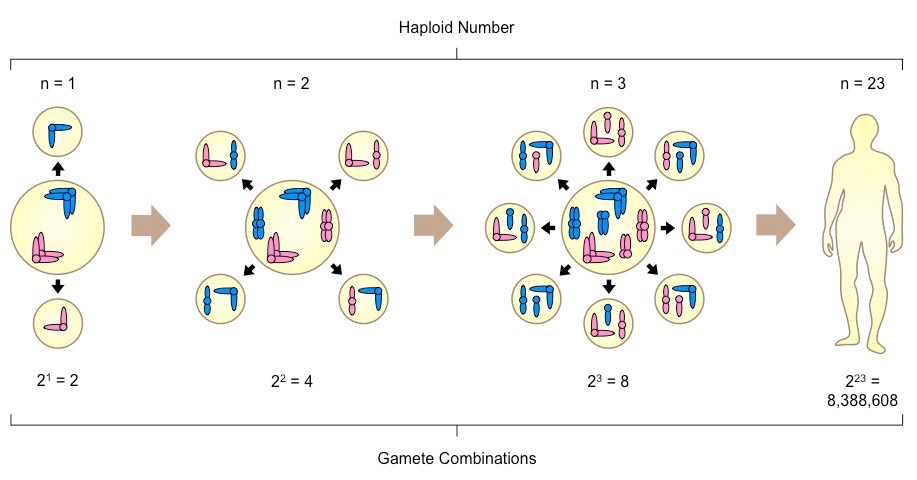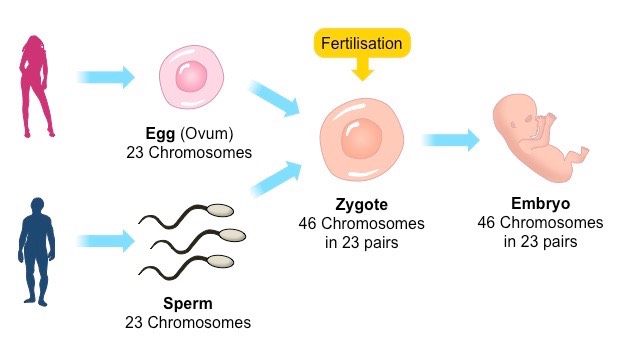![]()
Understandings:
• Crossing over and random orientation promotes genetic variation
• Fusion of gametes from different parents promotes genetic variation
The advantage of meiotic division and sexual reproduction is that it promotes genetic variation in offspring
The three main sources of genetic variation arising from sexual reproduction are:
- Crossing over (in prophase I)
- Random assortment of chromosomes (in metaphase I)
- Random fusion of gametes from different parents
Crossing Over
Crossing over involves the exchange of segments of DNA between homologous chromosomes during prophase I
- The exchange of genetic material occurs between non-sister chromatids at points called chiasmata
As a consequence of this recombination, all four chromatids that comprise the bivalent will be genetically different
- Chromatids that consist of a combination of DNA derived from both homologous chromosomes are called recombinants
- Offspring with recombinant chromosomes will have unique gene combinations that are not present in either parent

Random Orientation
When homologous chromosomes line up in metaphase I, their orientation towards the opposing poles is random
The orientation of each bivalent occurs independently, meaning different combinations of maternal / paternal chromosomes can be inherited when bivalents separate in anaphase I
- The total number of combinations that can occur in gametes is 2n – where n = haploid number of chromosomes
- Humans have 46 chromosomes (n = 23) and thus can produce 8,388,608 different gametes (223) by random orientation
- If crossing over also occurs, the number of different gamete combinations becomes immeasurable

Random Fertilisation
The fusion of two haploid gametes results in the formation of a diploid zygote
- This zygote can then divide by mitosis and differentiate to form a developing embryo
As meiosis results in genetically distinct gametes, random fertilisation by egg and sperm will always generate different zygotes
- Identical twins are formed after fertilisation, by the complete fission of the zygote into two separate cell masses

